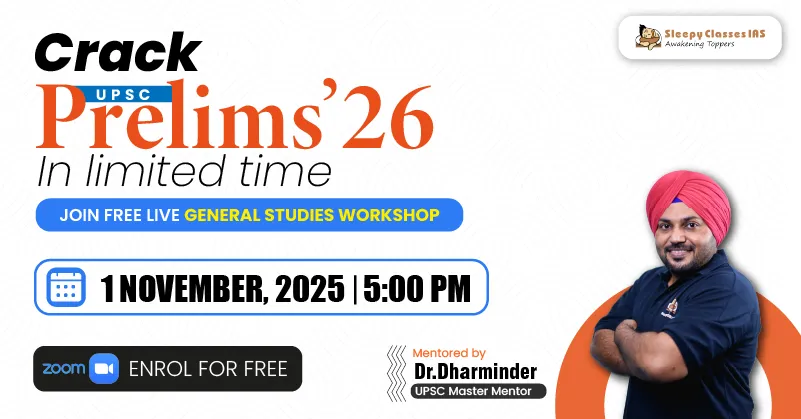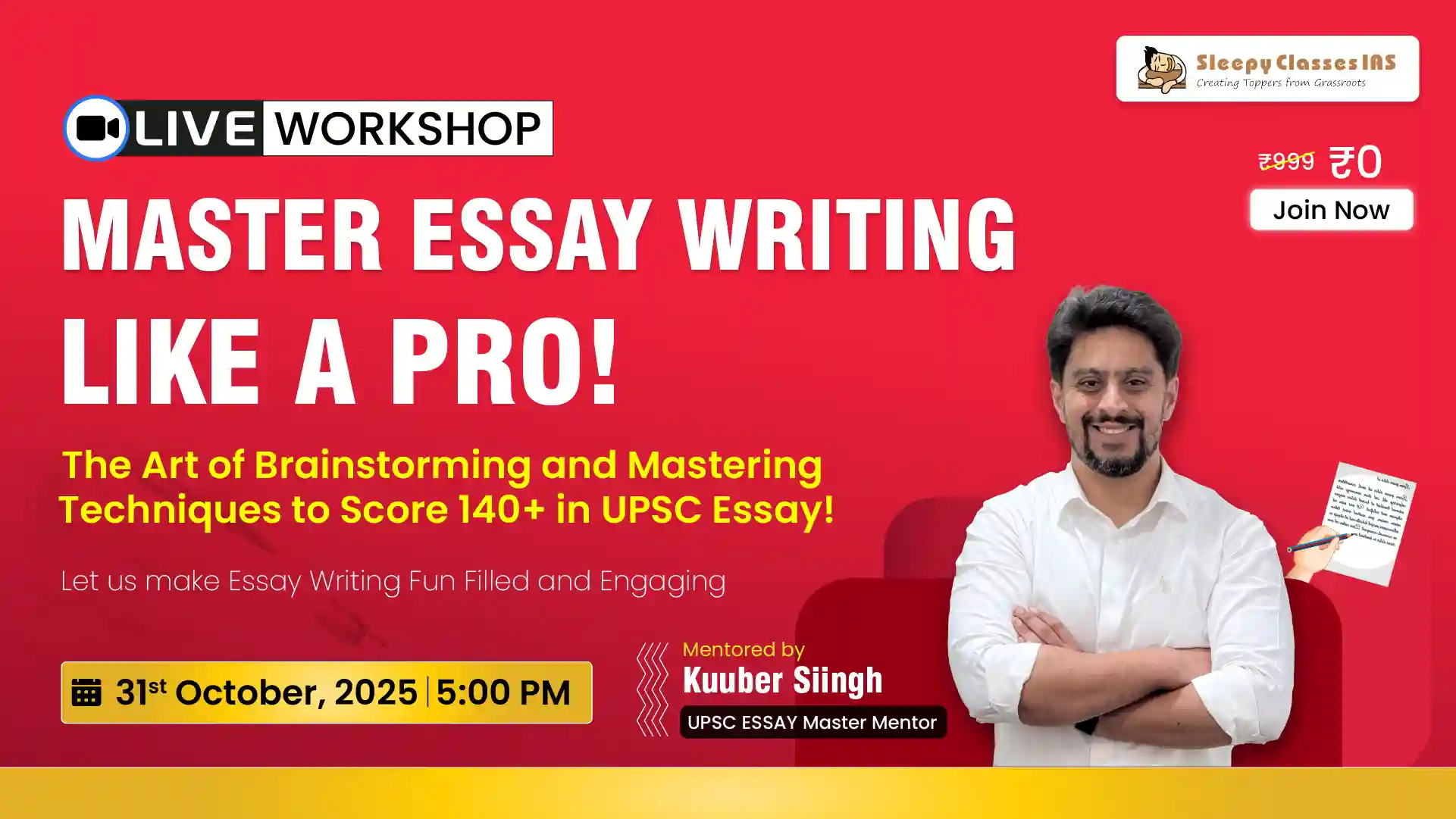Preparing for the UPSC examination can be a daunting task. Aspiring candidates often need help to grasp and retain the extensive information required. Mind maps are a simple yet powerful tool that can transform how you approach UPSC preparation.
In this article, we will explore the significance of mind maps in UPSC preparation. We will delve into their benefits. We will discuss effectively creating and utilizing mind maps to ace the UPSC examination.
Key Takeaways
- Mind maps simplify complex topics, making them easier to understand and remember.
- They enhance memory retention by visually organizing information.
- Mind maps provide a structured overview of subjects, aiding in efficient revision.
- They can be personalized to suit individual learning styles and preferences.
- Incorporating mind maps into your study routine can improve your overall UPSC preparation.
Understanding Mind Maps and Their Importance in UPSC Preparation
Mind maps have emerged as invaluable allies for UPSC aspirants. Their ability to enhance memory retention makes them an indispensable tool for success. By utilizing mind maps, UPSC candidates gain a structured overview of topics. This enables them to grasp the big picture while focusing on key details. Mind maps allow aspirants to review important concepts and their interconnections quickly. So, whether you’re starting your UPSC journey or amid preparation, harness the power of mind maps.
How Mind Maps Enhance Memory Retention
Cognitive Benefits of Visual Learning
Mind maps are a powerful tool for boosting memory and enhancing recall. They engage both sides of the brain, use visual cues and associations, and create a structured overview of the material. This visual nature of mind maps facilitates quick and efficient recall during revisions and exams.
Techniques for Effective Memory Retention
Incorporate keywords and images into your mind maps to enhance memory retention. Keywords act as triggers, instantly reminding you of the associated information. Images, on the other hand, engage the visual cortex and aid in visualizing complex concepts. Use icons, symbols, and drawings that represent key ideas, making your mind map visually appealing and memorable.
Real-Life Examples of Successful UPSC Candidates
Many successful UPSC candidates have attributed their success to the use of mind maps. For instance, Medha Anand (AIR 13, UPSC CSE 2023) found mind maps instrumental in her preparation, helping her improve her rank to get into the IAS. By actively engaging with the material through mind maps, she was able to recall information more effectively during the exam.
Creating Effective Mind Maps for UPSC Subjects
Step-by-Step Guide to Making Mind Maps
To create a mind map for UPSC subjects, start with a central topic, such as a subject or a specific theme. Branch out with main ideas and create sub-branches for related concepts. Use keywords, colors, and images to enhance visual memory. Keep it concise and focused to avoid clutter.
Tools and Software for Digital Mind Mapping
Several tools and software can help you create digital mind maps. Popular options include XMind, MindMeister, and Coggle. These tools offer various features like templates, collaboration options, and cloud storage, making it easier to organize and access your mind maps.
Common Mistakes to Avoid
When creating mind maps, avoid overcrowding the map with too much information. Stick to key points and avoid lengthy sentences. Another common mistake is neglecting to update the mind map regularly. Ensure you revise and update your mind maps to keep them relevant and useful.
Consistency is key. Practice creating mind maps for various subjects within the UPSC syllabus to improve your proficiency.
Integrating Mind Maps into Your Daily Study Routine
Scheduling and Planning with Mind Maps
To effectively integrate mind maps into your daily study routine, start by scheduling dedicated time slots for creating and reviewing them. Consistency is key. Allocate specific times during the day when you are most alert and focused. This will help you make the most out of your study sessions.
Balancing Mind Maps with Traditional Study Methods
While mind maps are a powerful tool, they should complement traditional study methods, not replace them. Begin with a thorough reading of the topic from standard textbooks and reference materials. This will give you a strong foundation of knowledge. Then, use mind maps to organize and visualize this information. Consider using different note-taking styles such as mind maps or summaries, according to your preference.
Tracking Progress and Making Adjustments
Regular review is crucial to reinforce the knowledge gained through mind maps. Allocate dedicated time for revisiting and updating your mind maps. As you progress in your studies, new connections and ideas may emerge, which can be added to the existing mind map. The act of reviewing the mind map itself reinforces learning, as it recapitulates the entire subject in a concise and organized format.
Mind maps help you make connections between different topics and prioritize study materials. It’s also useful for note-taking, brainstorming, planning, and problem-solving. A mind map can improve your understanding and retention of information and help you gain a more precise overview of a topic.
Subject-Specific Mind Mapping Strategies
Mind Maps for General Studies Papers
Creating mind maps for General Studies (GS) papers can significantly enhance your understanding and retention of vast information. Condensing study material into concise notes and visual representations helps in quick and efficient revision. For instance, in GS Paper 1, you can create mind maps for different historical periods, highlighting key events and figures. Similarly, for GS Paper 2, focus on important articles of the Constitution and landmark judgments.
Mind Maps for Optional Subjects
When it comes to optional subjects, mind maps can be tailored to cover specific topics in-depth. Start with a central theme and branch out to subtopics, ensuring you cover all essential aspects. This method allows for a quick overview and helps in connecting various concepts. For example, in Sociology, you can create mind maps for different theories and their proponents, making it easier to recall during exams.
Incorporating Current Affairs into Mind Maps
Integrating current affairs into your mind maps is crucial for UPSC preparation. This approach not only keeps you updated but also helps in linking static concepts with dynamic events. Use mind maps to track ongoing issues, government policies, and international relations. This will aid in writing well-rounded answers in the exam.
Regularly updating and revising your mind maps ensures that you stay on top of your preparation and can recall information quickly during exams.
Expert Tips and Best Practices for Using Mind Maps
Advice from Experienced UPSC Mentors
Experienced UPSC mentors emphasize the importance of incorporating mind maps into your study routine. They suggest starting with simple maps and gradually making them more detailed. This approach helps in avoiding information overload and ensures that you can focus on key points. Mentors also recommend using colors, symbols, and images to make your mind maps visually appealing and engaging.
Case Studies of Top Rankers
Top rankers have successfully used mind maps to organize their study materials systematically. For instance, many have incorporated daily, weekly, and monthly revision sessions into their study plan using mind maps. This method helps in prioritizing important concepts and minimizes the chances of missing crucial information. By regularly updating and revising their mind maps, these candidates have managed to reinforce their learning effectively.
Innovative Techniques and Personalization
Innovative techniques such as connecting related ideas with lines or arrows can show the relationships between different concepts. This helps in understanding the interconnectedness of various topics. Additionally, personalizing your mind maps by using keywords and concise phrases can capture the essence of each idea without creating lengthy notes. Regularly reviewing and revising your mind maps can further enhance memory retention and ensure consistency in your preparation.
Mind maps allow you to focus on key points, avoiding information overload and helping in prioritizing important concepts.
Challenges and Solutions in Using Mind Maps
Overcoming Initial Hesitation and Doubts
Starting with mind maps can be daunting for many UPSC aspirants. The unfamiliarity with this technique often leads to hesitation. To overcome this, begin with simple topics and gradually move to more complex ones. This step-by-step approach helps build confidence and familiarity with the process.
Dealing with Information Overload
Mind maps are designed to simplify complex information, but they can sometimes lead to information overload. To avoid this, focus on key points and avoid cluttering the map with too many details. Prioritize important concepts and use color coding to differentiate between various topics.
Ensuring Consistency and Regular Use
Consistency is crucial for the effectiveness of mind maps. Make it a habit to create and review mind maps regularly. This practice ensures that the information stays fresh in your memory and helps in quick revisions. Integrate mind maps into your daily study routine to make the most out of this visual learning technique.
Mind maps have redefined, revolutionized, and simplified the way aspirants prepare for the UPSC IAS Civil Services Exam. Today, it’s India’s top method for visual learning and memory retention.
Navigating the complexities of mind mapping can be challenging, but with the right strategies, you can unlock its full potential. At Sleepy Classes, we offer comprehensive resources and expert guidance to help you master this powerful tool. Visit our website to explore our UPSC courses and start your journey towards success today!
Conclusion
Mind maps serve as a dynamic and efficient study aid for UPSC aspirants. By visually organizing information, connecting ideas, and condensing complex topics, you can streamline your preparation process and boost your chances of success. Remember, the key lies not only in creating mind maps but in consistently using them as an integral part of your study routine. So, unlock the potential of mind maps and pave the way to triumph in the UPSC examination.
Frequently Asked Questions
What are mind maps for UPSC preparation?
Mind maps for UPSC are visual diagrams that help in understanding and retaining information related to UPSC topics. They provide a structured overview and aid in efficient revision.
How do mind maps enhance memory retention for UPSC aspirants?
Mind maps enhance memory retention by visually organizing information, making it easier to recall. They break down complex topics into simpler visual elements, aiding comprehension and retention.
Can mind maps be used for all UPSC subjects?
Yes, mind maps can be used for all UPSC subjects, including General Studies, Optional Subjects, and Current Affairs. They help in organizing and connecting various concepts across different subjects.
What tools and software can I use for digital mind mapping?
There are several tools and software available for digital mind mapping, such as MindMeister, XMind, and SimpleMind. These tools offer various features to create, edit, and share mind maps easily.
How can I integrate mind maps into my daily study routine?
You can integrate mind maps into your daily study routine by scheduling specific times for creating and reviewing them. Use them alongside traditional study methods and regularly update them to track your progress.
What are some common mistakes to avoid when creating mind maps for UPSC?
Common mistakes to avoid include overcomplicating the mind map, using too many colors or fonts, and not maintaining a clear structure. Keep your mind maps simple, organized, and focused on key concepts.






